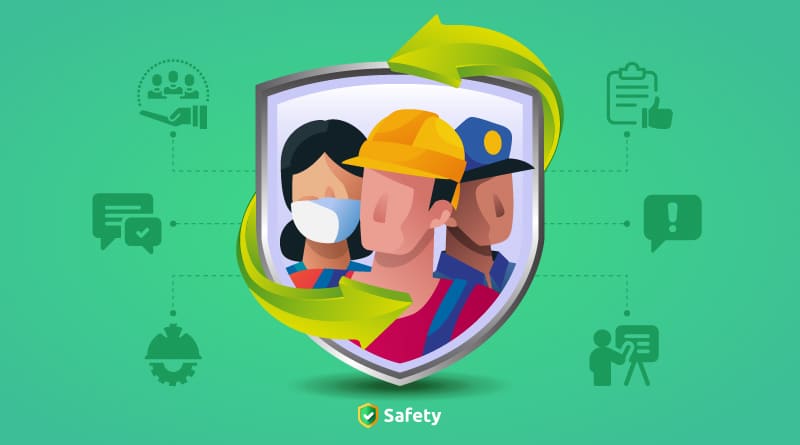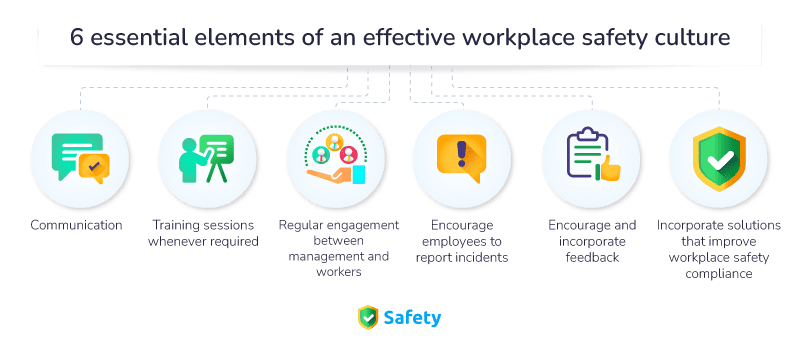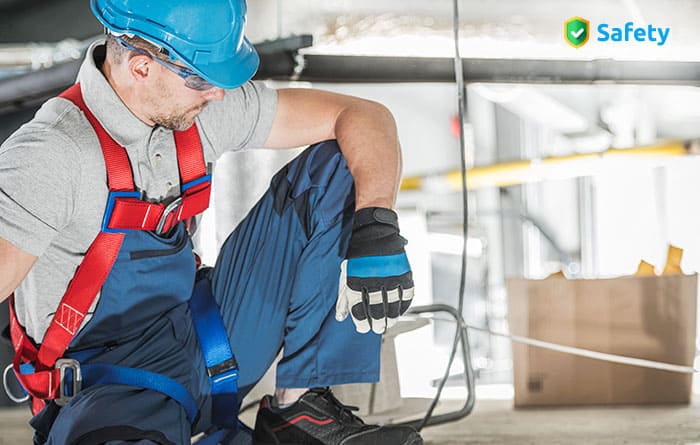Whenever you Google the terms “workplace safety” or “employee safety”, you’re almost certain to see a result that talks about workplace safety culture. Well, that’s because one is needed for the other. To be more precise, ensuring workplace safety requires an effective culture that promotes it across your organization and employees.
In recent years, workplace safety has become increasingly crucial for every organization, especially those that require their employees to operate heavy machinery, work in hazardous environments, and have risks associated with the tasks performed by them.
Unfortunately, workplace incidents occur if organizations are not improving workplace safety continuously, and the latter should be a part of the culture as well. These workplace incidents lead to OSHA violations, heavy penalties, and long-term effects down the road. This is exactly why organizations are heavily focusing on improving employee safety, hiring safety professionals, and reducing incidents, and they are aiming to do so by promoting a safe culture within the workplace.
That being said, let’s take a look at what workplace safety culture is, how to promote it, and 6 of the essential elements.
What is meant by workplace safety culture?
Safety culture in the workplace refers to the type of organizational culture that prioritizes employee safety and the values and beliefs that support it. Moreover, it also entails that it isn’t exclusive to the management or the workers – these aspects must be shared by everyone within the organization. But why is such a culture crucial? Well, organizations that promote a culture of safety have lesser workplace incidents, higher employee retention, better bottom lines, and optimized operations.
How do you promote a safety culture in the workplace?
One of the most basic things to understand about culture is that it is shared by a group of people who have something in common, and that commonality, in this case, is the organization. As previously mentioned, such beliefs must be present in all parts of the organization and at all levels, not in just some departments or levels. Everyone within the organization is responsible for their own safety as well as the safety of others – one must work to not only keep themselves safe but everyone else as well. Thus, a workplace safety culture is promoted by instilling its beliefs in everyone.
With that out of the way, let’s take a look at some of the crucial elements that a culture promoting workplace safety has.
6 essential elements of an effective workplace safety culture
Communication
In any culture, communication is a crucial piece of the puzzle and the key to success. Ensure that workers understand what your goals are regarding workplace safety and how you want to achieve them. Moreover, responsible organizations that truly want a safe workplace should emphasize the fact that safety is above everything else and instill this message in all their workplace safety efforts, posters, training sessions, etc.
Organizations that have commendable safety cultures also hold regular safety sessions – weekly, biweekly, and sometimes monthly. Doing so over time proves that you are actually committed to ensuring a safe workplace, and you can increase employee buy-in by putting the workers in charge of such sessions.
Work on policies in place that resonate with your message regarding workplace safety and ensure that they are available to everyone at all times, preferably in digital formats. You can use a workplace safety compliance application to readily share such documents and relevant knowledge with employees – more on that later.
Training sessions whenever required
One of the most common but crucial elements of a culture promoting workplace safety is training. However, don’t make training sessions tedious – make them engaging by making the workers participate and share their own experiences as well as any tips they have to share with their colleagues. This shows that you value your employees and their views regarding workplace safety.
Needless to say, training sessions should also be conducted whenever you implement a new practice, policy, or machinery that can affect workplace safety. Whenever new machinery is introduced, ensure that the workers that need to operate them understand the ins and outs of the equipment.
Regular engagement between management and workers
A workplace safety culture must be initiated from the top management, not the other way around. Just stating that you want a safe culture for the employees to your direct subordinates will not be enough – it’s counterintuitive. Instead, you have to lead by example so that everyone else follows.
Ensure that all the employees at all levels are aware of your vision about safe workplace culture. Moreover, directly engage with everyone, whenever possible, to instill in them that safety is the top priority and let them know how you are working and taking feedbacks regarding its continuous improvement – that brings us to the next element.
Encourage employees to report incidents
One of the most important aspects to ensure workplace safety is by preventing incidents, accidents, and even near misses. The latter can become a considerable issue down the line if not addressed in due time. What is the better way to detect such events than asking employees to report them?
Remind workers that they are an integral part of the organization and without their participation, you cannot work on improving employee safety. Repeat this message during training sessions, safety meetings, and whenever these workplace incidents take place.
You can further improve workplace safety by incorporating CloudApper Safety – an OSHA recordkeeping application that enables workers to report incidents, accidents, and even near misses right from their smartphones. They can also add photos as supporting materials, and all of this helps the management take quicker decisions, reducing response times and paperwork.
Encourage and incorporate feedback
While the management is in charge of calling the shots for any given organization, a culture promoting workplace safety must encourage employees to provide their feedback regarding the existing safety measures. The employees are the individuals working on the frontlines and are at risk of getting injured. As a result, they are the most knowledgeable ones to provide ample feedback about safety challenges they face at work. However, taking the feedback is just one part of the process, evaluating it to determine feasibility and incorporating it into your practices significantly improves workplace safety.
Incorporate solutions that improve workplace safety compliance
Everything is going digital nowadays, and doing so has multiple benefits for any given organization. What about OSHA recordkeeping – can it be digitized? Yes – Safety does that, and more!
Safety, as previously stated is an OSHA recordkeeping software that removes the administrative burden, makes the entire process accessible right from your smartphones, and streamlines OSHA compliance.
Besides incident reporting and centralized document storage, it can also help conduct internal audits to identify the most common causes or locations of workplace incidents and help address them, improving workplace safety down the line.
Moreover, the application also enables employees to share workplace safety practices they feel are ideal for them with their colleagues and the management, fostering a workplace culture that focuses on safety for all.





















